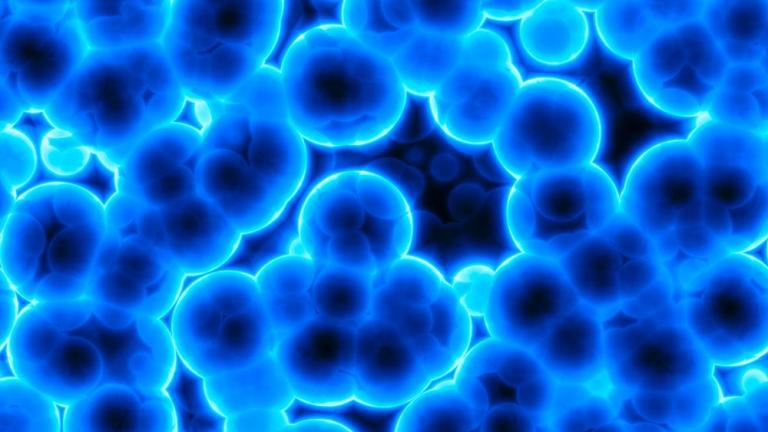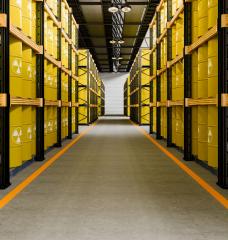
The carbon cycle, in which CO2 is incorporated into living organisms and later released back into the atmosphere through respiration, relies on the ability of bacteria and fungi to degrade complex organic materials such as polysaccharides. These materials represent large reservoirs of carbon and energy on the planet. By degrading them, microbes enable the recycling of this energy and carbon into the ecosystem. However, much like some of the human-designed synthetic materials, some polysaccharides can be highly recalcitrant to degradation.
Using a combination of computational models and experiments, MIT scientists have shown that, in order to degrade, recalcitrant polysaccharides bacteria “team up” by forming micrometer-scale cell clusters where cells facilitate each other’s growth. This study demonstrates how cooperation among microbes, often ignored in biogeochemical models, can have a significant impact on ecosystem-level processes. The work, published in the Proceedings of The National Academy of Science Oct. 30, shows that the emergence of these cooperative clusters is a stochastic process that depends on cells encountering each other and aggregating on the surface of polysaccharide particles.
“One of the implications of cooperation is that degradation rate can be determined by the time it takes for cells to find each other, and this can be very long if cell densities are low” says Otto X. Cordero, associate professor of civil and environmental engineering at MIT.
The research team showed that for some organisms, the critical cell densities required for degradation can be larger than their natural abundance in the environment, suggesting that the degradation of complex organic matter can be bacteria-limited in some cases.
“The fundamental reason why cooperation emerges in these microorganisms is because the large molecules that make up complex materials need to be dissolved by secreted enzymes, outside cells” says Cordero.
The researchers showed that in an environment like the ocean, 99 percent of all carbon released outside cells is lost by diffusion. The formation of cell clusters of sizes 10-20 micrometers is a cooperative behavior that increases the uptake of dissolved carbon, enabling bacteria to initiate growth and degradation.
Cordero’s lab uses a combination of genomics, experiments, and modeling to understand the community ecology of microorganisms, as well as its functional and evolutionary consequences. Postdocs Ali Ebrahimi and Julia Schwartzman are also authors on the paper. Ebrahimi specialized in the modeling of biogeochemical processes at the microbe level. Julia Schwartzman specialized in the ecophysiology of microbes. Both are part of the Simons Collaboration PriME (Principles of Microbial Ecosystems), which is co-directed by Cordero and funds labs in University of California at San Diego, University of Southern California, Caltech, University of Georgia, ETH Zurich, and MIT.






